As much as we love the outdoors, it’s important to remember — and respect — that we’re guests in the backcountry, sharing the wild with the animals that call it home.
Aside from predators like bears, wolves, mountain lions and alligators, one species you’ll need to be mindful of is snakes, especially venomous ones. Spend enough time hiking in regions where snakes are found and you’re sure to encounter one eventually. Today we’ll look at four tips to prepare you for encountering poisonous snakes on the trail.
RELATED: 20 Most Venomous Snakes in the World
Know the Hangouts
An important part of reducing your risk of encountering a venomous snake is knowing where they’re likely to be found. Snakes are cold-blooded reptiles, which means you’ll likely see them basking in the sun when the temperatures are cooler, such as early in the morning or in the evening.
Give them space and you should be fine. When the sun gets higher, snakes tend to seek cool spots like bushes and beneath rocks or fallen trees. To prevent provoking a bite, look before stepping onto and off fallen trees and rocks to see if a snake is coiled where you’re about to put your feet.
Don’t Be a Hero
Should you come across a snake on the trail, it may be tempting to try to coax or even move it away from the trail. This is the most common way people suffer snake bites while hiking. It’s easier to walk around the snake so resist the urge to move it and just keep on hiking.
Also some hikers aren’t fans of snakes and may even try to kill one they stumble upon. Doing so is not only completely disrespectful of nature, but may also be illegal depending on where you’re hiking.
Do Your Homework
Obviously, if you’re heading into unfamiliar territory, you should always research the area ahead of time. With snakes, this means checking local DNR websites or field guides for the venomous species you may encounter. The United States is home to its fair share of poisonous snakes, including several types of rattlesnakes, water moccasins, copperheads and coral snakes.
Bonus Tip: Coral snakes are almost identical to some species of milk snakes and king snakes, so look for red stripes touching yellow stripes to let you know that it’s a coral snake and not an impostor.
Umm, It Bit Me…Now What?
Sometimes, no matter how careful you are, you’ll still get bit by a snake that’s found its way into your tent for warmth or was resting on the other side of the log you just stepped over. The first—and sometimes hardest, I know—thing to do here is remain calm, as panicking may actually cause the venom to spread more quickly.
Next, you’ll want to identify the snake that bit you if possible. This will help if antivenin is needed. Make your way back to your car and head to the nearest hospital right away. Thankfully, the U.S. isn’t home to many deadly snakes, but venomous bites do hurt a ton and can cause long-term damage if untreated.
Photo credit: Wikimedia
Snakes
-
Inland Taipan
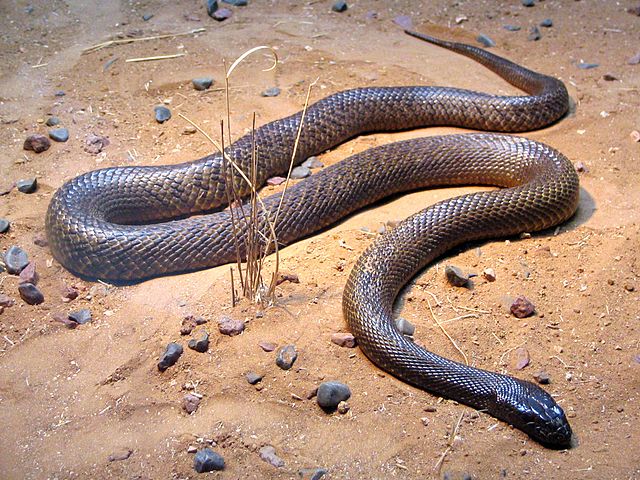
Considered the most venomous snake in the world based on the median lethal dose value in mice, the inland taipan venom, drop by drop, is by far the most toxic of any snake. Found in the semi-arid regions of central east Australia, it is commonly known as the western taipan, small0scaled snake or the fierce snake.
Photo credit: Wikimedia
-
Eastern Brown Snake
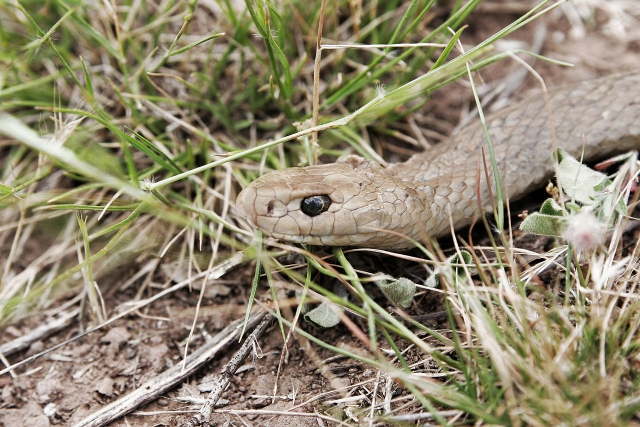
The eastern brown snake or the common brown snake is considered the second most venomous snake in the world. It's native to Australia, Papua New Guinea and Indonesia.
Photo credit: Wikimedia
-
Black Mamba

One of the most venomous snakes in the world, the black mamba is found in parts of sub-Saharan Africa. When threatened it opens its inky black mouth, spreads its narrow neck-flap and sometimes hisses.
Photo credit: Wikimedia
-
Indian Cobra
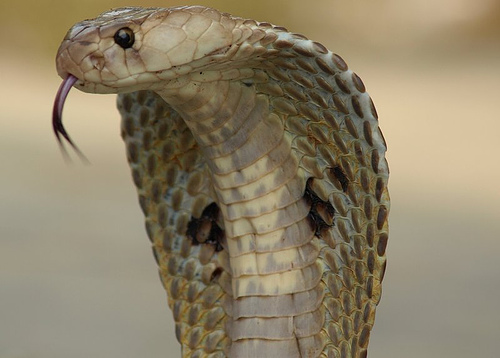
Although its venom is moderate, the rapid-acting qualities of the Indian cobra venom make it more dangerous than most. For this reason, mortality rates are rather low although symptoms come on fast.
Photo credit: Wikimedia
-
Saw-scaled viper
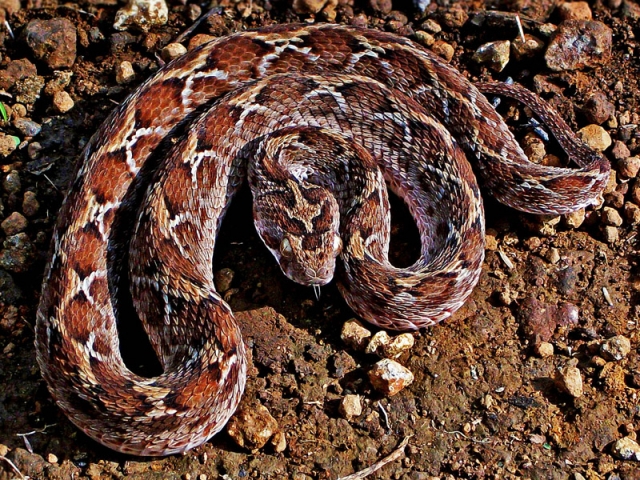
Though small in size, its attitude makes the saw-scaled viper a venomous force to be reckoned with. This snake ranges from India, Pakistan, Sri Lanka, parts of the Middle East and Africa north of the equator, making it responsible for many human fatalities each year.
Photo credit: Wikimedia
-
Russell's Viper
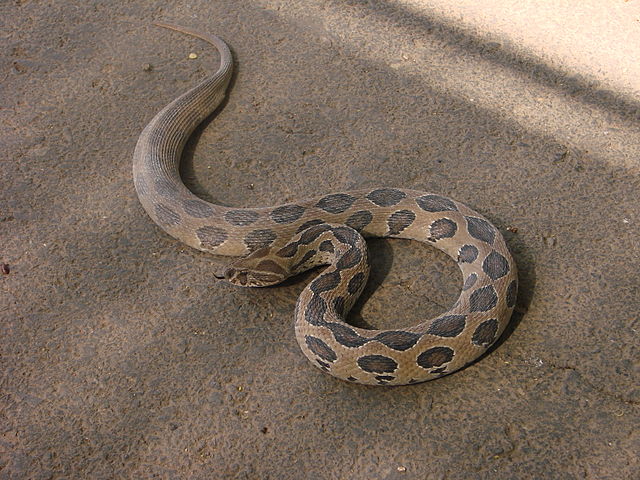
One of the most painful bites comes from the russell's viper, which is known to cause internal bleeding. This is a very aggressive snake that can be extremely irritable found mostly in India and Southeast Asia.
Photo credit: Wikimedia
-
Common Krait
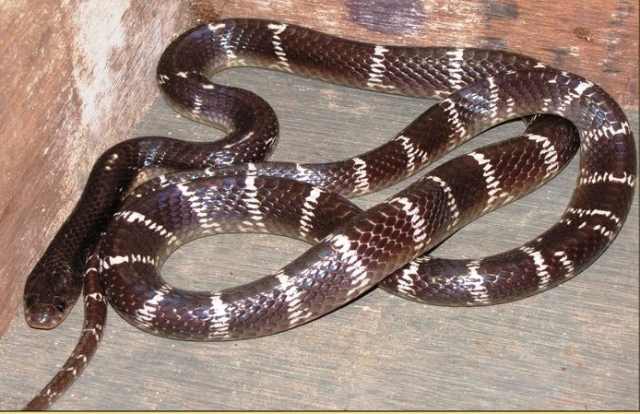
Often considered the most dangerous snake in India, the common krait can induce muscle paralysis quickly. Once paralysis has developed after a bite from a common krait it's often impossible to reverse even with anti-venom.
Photo credit: Wikimedia
-
Coastal Taipan
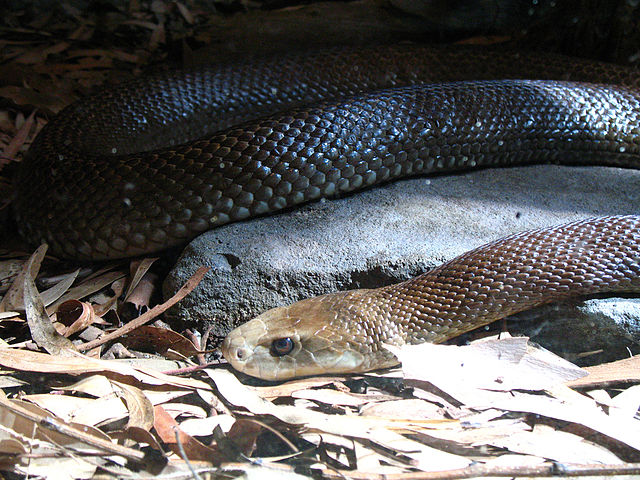
The coastal taipan is a venomous snake found in northern and eastern Australia and the island of New Guinea. Adults can reach four feet and are most active in early morning.
Photo credit: Wikimedia
-
Terciopelo
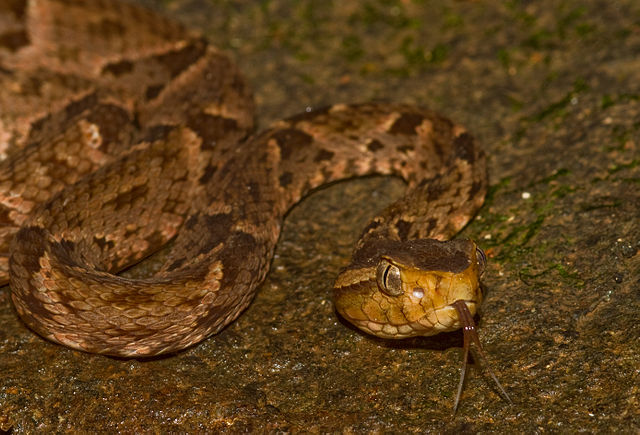
The terciopelo, considered the most dangerous snake in Costa Rica, is known to move extremely fast, though usually choosing to flee than confront a threat. In Venezuela it's responsible for 78 percnet of all snakebite fatalities.
Photo credit: Wikimedia
-
King Cobra
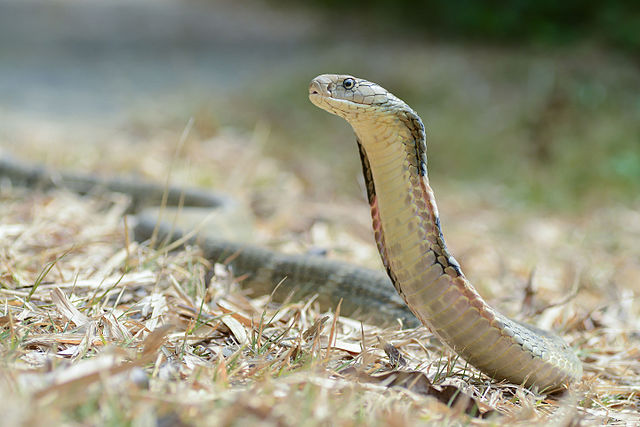
Found mostly in forests throughout India and Southeast Asia, the king cobra is the world's longest venomous snake reaching lengths of 18 feet. It preys mostly on other snakes and sometimes rodents.
Photo credit: Wikimedia
-
Many Banded Krait
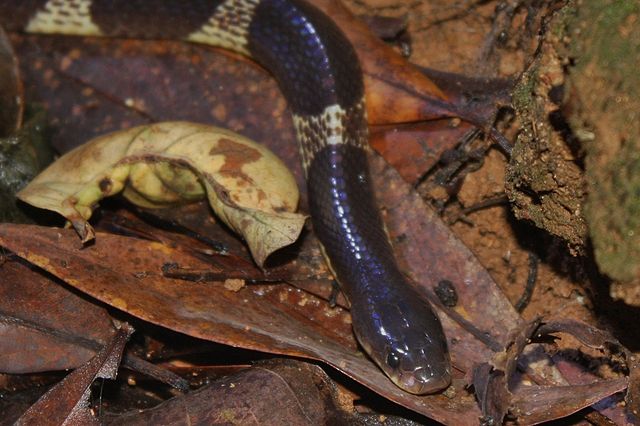
Also known as the Taiwanese krait or Chinese krait, the many banded krait is endemic to central and southern China and Southeast Asia. It's mostly found in marshy areas and it's nocturnal.
Photo credit: Wikimedia
-
Western Green Mamba
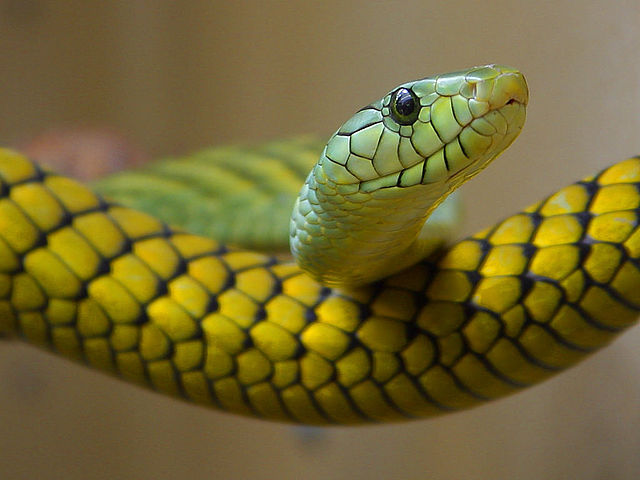
The western green mamba also known as the west African green mamba is extremely nimble and dangerous, preferring to spend most of its time in the trees.
Photo credit: Wikimedia
-
Eastern Green Mamba
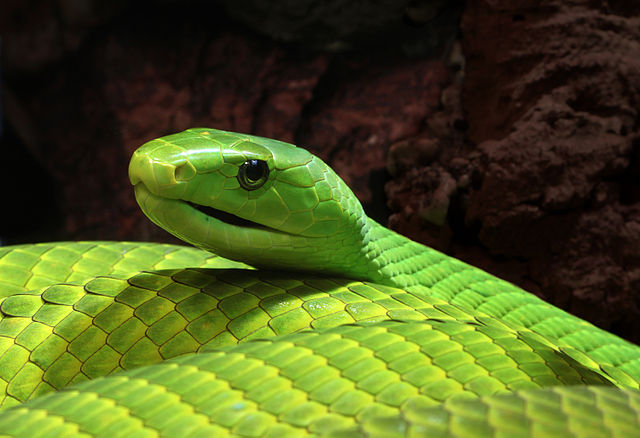
Like other mamba, the green mamba spends most of its time in the trees. A single bite contains enough venom to kill several humans. The eastern green mamba is typically found in eastern Africa.
Photo credit: Eastern Green Mamba
-
Jameson's Mamba
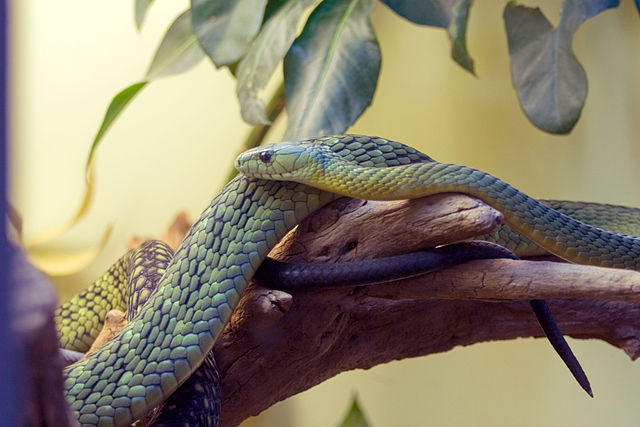
The Jameson's mamba is another in the mamba family to look out for. Highly venomous, this snake is also found in Africa.
Photo credit: Wikimedia
-
Caspian Cobra

The caspian cobra is mostly found in Central Asia and averages around 1 meter in length.
Photo credit: Wikimedia
-
Phillipines Cobra
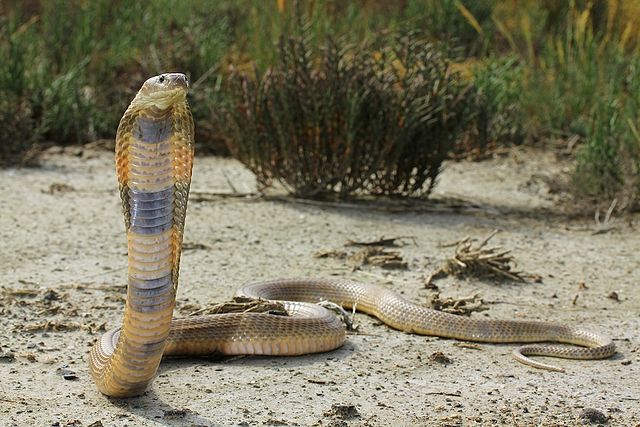
The Phillipines cobra is typically found in northern Phillipines, known for being stocky, highly venomous spitting cobra.
Photo credit: Wikimedia
-
Common Death Adder
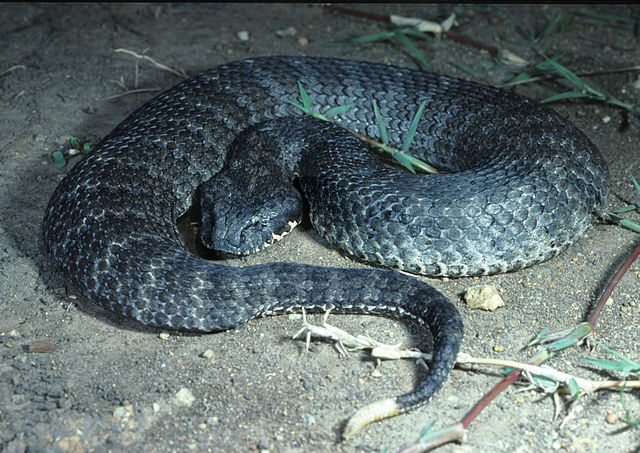
Just your common death adder. Nothing to be worried about here. It's only one of the most venomous land snakes in Australia, but is increasingly becoming more rare.
Photo credit: Wikimedia
-
Tiger Snake
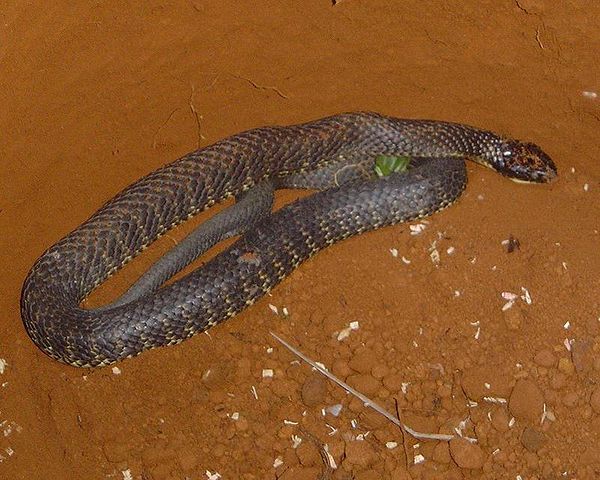
Tiger snakes are often found in the southern region of Australia and come in many colors though always with the banded pattern like a tiger.
Photo credit: Wikimedia
-
Forest Cobra
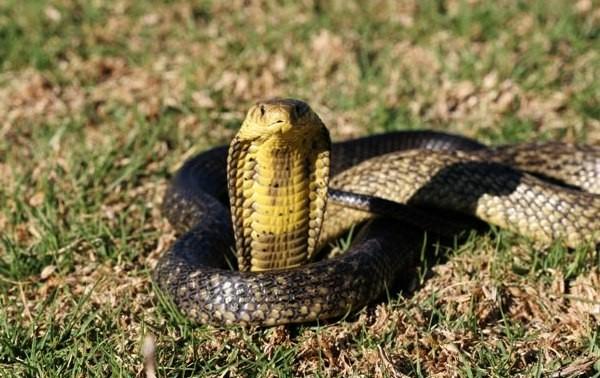
The forest cobra is the largest in the cobra family and considered a highly irritable and aggressive snake. In one area if Guinea in 2008, 375 bites from the forest cobra resulted in 79 deaths.
Photo credit: Wikimedia
-
Gaboon viper
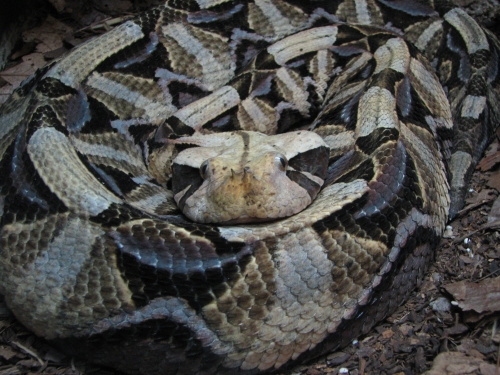
Native to the rainforests and savannas of sub-Saharan Africa, the Gaboon viper has the distinction of being the world's heaviest viper and the longest fangs that can reach up to two inches in length. Because of this, it has the highest venom yield out of any species.
Photo credit: Wikipedia








